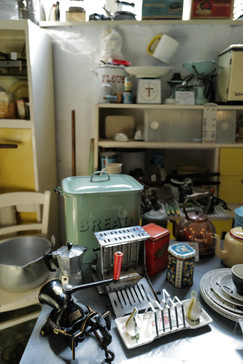A Walk Through History - The Museum of Cornish Life
- christenpears
- Oct 18, 2023
- 2 min read
As someone who studied history at university, there's nothing I like more than a good old-fashioned museum and The Museum of Cornish Life in Helston is one of the best. There are no interactive computer-based gimmicks; the artefacts here are allowed to speak for themselves and what a fascinating and diverse collection they make. From a sword carried at The Battle of Waterloo to the village stocks, from flint arrow heads to children's toys, there are thousands of objects dating from the prehistoric period to the 20th century and they provide visitors with a wonderful insight into the history of Helston and The Lizard Peninsula.

The Museum of Cornish Life has its origins in a collection put together by members of The Old Cornwall Society from 1937 onwards. By1949, the collection had grown so much that the museum formally established in the town's former market house, later expanding to fill the drill hall next door. Both are impressive civic buildings and a testament to Helston's history as a prosperous stannary town. Outside the front door visitors will see a cannnon salvaged from the wreck of the HMS Anson which was wrecked off Loe Bar in 1807, killing more than 100 people. It was this wreck that inspired Henry Trengrouse to invent some of the rocket lifesaving equipment and there's an exhibition dedicated to him and his pioneering work inside the museum.
The collection, which consists of thousands of diverse objects, is spread across three floors and five exhibition halls and is divided into categories including Geology, Maritime, Local Industry, Farming and Costume. You could spend hours here and still not see everything. We allowed a morning for browsing but it really wasn't long enough.
There's guaranteed to be something to appeal to both adults and children whatever their interests. As a professional seafarer, Chris was naturally drawn to the Trengrouse exhibits but he was also fascinated by the objects relating to Marconi who carried out groundbreaking wireless experiments on the The Lizard. I, on the other hand, particularly enjoyed the cleverly-arranged domestic settings, particularly the Victorian and 1950s kitchens.
The Museum of Cornish Life is free to enter and well-behaved dogs on leads are welcome. For more information visit the website here.





















Comments